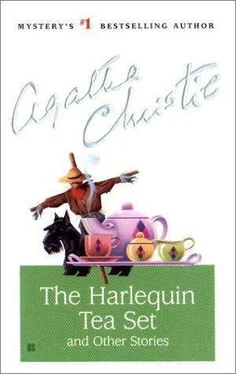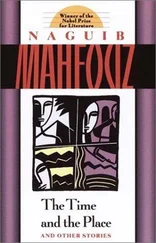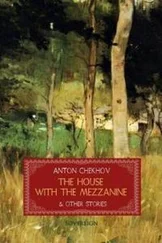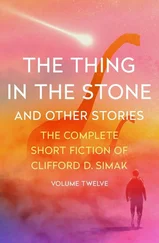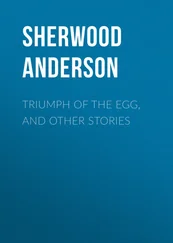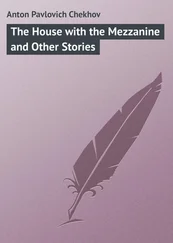Agatha Christie - The Harlequin Tea Set and Other Stories
Здесь есть возможность читать онлайн «Agatha Christie - The Harlequin Tea Set and Other Stories» весь текст электронной книги совершенно бесплатно (целиком полную версию без сокращений). В некоторых случаях можно слушать аудио, скачать через торрент в формате fb2 и присутствует краткое содержание. Жанр: Старинная литература, на английском языке. Описание произведения, (предисловие) а так же отзывы посетителей доступны на портале библиотеки ЛибКат.
- Название:The Harlequin Tea Set and Other Stories
- Автор:
- Жанр:
- Год:неизвестен
- ISBN:нет данных
- Рейтинг книги:4 / 5. Голосов: 1
-
Избранное:Добавить в избранное
- Отзывы:
-
Ваша оценка:
- 80
- 1
- 2
- 3
- 4
- 5
The Harlequin Tea Set and Other Stories: краткое содержание, описание и аннотация
Предлагаем к чтению аннотацию, описание, краткое содержание или предисловие (зависит от того, что написал сам автор книги «The Harlequin Tea Set and Other Stories»). Если вы не нашли необходимую информацию о книге — напишите в комментариях, мы постараемся отыскать её.
The Harlequin Tea Set and Other Stories — читать онлайн бесплатно полную книгу (весь текст) целиком
Ниже представлен текст книги, разбитый по страницам. Система сохранения места последней прочитанной страницы, позволяет с удобством читать онлайн бесплатно книгу «The Harlequin Tea Set and Other Stories», без необходимости каждый раз заново искать на чём Вы остановились. Поставьте закладку, и сможете в любой момент перейти на страницу, на которой закончили чтение.
Интервал:
Закладка:
The sole purpose of the first clue in "Manx Gold," the rhyme which begins "Four points of the compass so there be," published in the Daily Dispatch on Saturday, May 31, was to indicate that the four treasures would be found in the north, south, and west of the island, but not in the east. The clue to the location of the first snuffbox was in fact the second clue, a map published on June 7. However, the treasure had already been found by a tailor from Inverness, William Shaw, because sufficient clues to its location were contained in the story itself.
The most important clue was Fenella's remark that the hiding place was near the place "where Derby was originally run... before it was changed to Epsom." This is a reference to the famous English horse race, which was first run at Derbyhaven in the southeast of the Isle of Man. The "quite near" island to which "a secret passage" was rumored to run from a farmhouse can easily be identified as St. Michael's Isle, on which, in addition to the twelfth-century chapel of St. Michael, is a circular stone tower known as the Derby Fort, from which the island gets its alternative name, Fort Island - "the two together is a likely conjunction which doesn't seem to occur anywhere else." The fort was represented on the map by a circle with six lines projected from it to represent the six historical cannons - "six of them" - in the fort; the chapel was represented by a cross.
The small pewter snuffbox was hidden on a rocky ledge running in a northeasterly direction from between the middle two cannons - "between these two have you got the compass?" - while Juan's initial suggestion that the clue "points to the northeast of the island" was a red herring.
The second snuffbox, apparently constructed from horn, was located on June 9 by Richard Highton, a Lancashire builder. As Fenella made clear to the murderous Dr. Fayll, Ewan Corjeag's dying words, "D'ye ken -" are a clue to the whereabouts of the treasure. In fact, they are the opening words of the traditional English song "John Peel," about a Cumbrian hunts-man, and when Juan suggested that "Bellman and True" was the "name of a firm that might help us," he was not referring to the "firm of lawyers in Douglas" mentioned at the beginning of the story but to two of John Peel's hounds, as named in the song. With these clues, the subject of the "torn snapshot," which was published as the third clue on June 9, would not have been "very hard to identify"; it was the ruins of the fourteenth-century Peel Castle on St. Patrick's Isle, and curved lines along the photograph's left-hand edge were the curlicues on the arm of a bench on Peel Hill, which looks down on the castle and under which the snuffbox was hidden. The charabanc journey to Snaefell, the highest peak on the Isle of Man, was another red herring.
The third "treasure" was found by Mr. Herbert Elliot, a Manx-born ship's engineer living in Liverpool M. Elliot later claimed that he had not read "Manx Gold" nor even studied the clues, but had simply decided on a likely area where, very early on the morning of July 8, he chanced upon the snuffbox, hidden in a gully.
The principal clue to its whereabouts was hidden in the fourth clue, published on June 14 (the vers beginning "In '85, this place made history"), in which the second word of each line spells out the following message:
"85... paces... east... north... east... of... sacred... circle... Spanish... head." The "Sacred circle" is the Meayll circle on Mull Hill, a roegalithic monument a little over a mile from the Spanish Head, the most southerly point of the island. The reference to an important event "in '85" and a Spanish chestnut, which from contemporary accounts proved a diversion for many searchers, were false leads. As for "Kirkhill Station," the clue uncovered by Juan, Fenella rightly said that there was no such place. However, there is a village called Kirkhill and there is also a railway station at Port Erin, where Juan and Fenella had had lunch before starting their search. If a line is drawn from Kirkhill to Port Erin and continued southward, it eventually crosses the Meayll circle, "the exact spot" identified by Juan.
Unfortunately, as was the case with the clues to the location of the third snuffbox, those for the fourth were never solved. The fifth and final clue, the verse beginning "Upon a rock, a sign you'll see," was published on June 21, but on July 10, at the end of the extended period allowed for the hunt, which had originally been intended to finish at the end of June, the final "treasure" was "lifted" by the Mayor of Douglas. Two days later, as a "sequel" to the story, the Daily Dispatch published a photograph of the event and Christie's explanation of the final clue:
That last clue still makes me smile when I remember the time we wasted looking for rocks with a sign on them. The real clue was so simple - the words "sixes and sevens" in the covering letter.
Take the sixth and seventh words of each line of the verse, and you get this: "You'll see. Point of (A). Near the lighthouse a wall." See the point of (A) we identified as the Point of Ayre. We spent some time finding the right wall, and the treasure itself was not there. Instead, there were four figures - 2, 5, 6, and 9 scrawled on a stone.
Apply them to the letters of the first line of the verse, and you get the word "park." There is only one real park in the Isle of Man, at Ramsey. We searched that park, and found at last what we sought.
The thatched building in question was a small refreshment kiosk, and the path leading past it ran up to an ivy-covered wall, which was the hiding place of the elusive snuffbox. The fact that the letter had been posted in Bride was an additional clue, as this village is near the lighthouse at the Point of Ayre, the northern-most tip of the island.
It is impossible to judge whether or not "Manx Gold" was a successful means of promoting tourism on the Isle of Man. Certainly, it appears that there were more visitors in 1930 than in previous years, but how far that increase could be ascribed to the treasure hunt is far from clear. Contemporary press reports show that there were many who doubted that it had been of any real value, and at a civic lunch to mark the end of the hunt, Alderman Crookall responded to a vote of thanks by railing against those who had failed to talk up the hunt - they were "slackers and grousers who never did anything but offer up criticism."
The fact that they were not allowed to take part in the hunt might have been a cause of apathy among the islanders, even though the Daily Dispatch offered the Manx resident with whom each finder was staying a prize of five guineas, equivalent to about one hundred fifty pounds today. This also might have accounted for various acts of gentle "sabotage," such as the laying of false snuffboxes and spoof clues, including a rock on which the word "lift" was painted but under which was nothing more interesting than discarded fruit peel.
While there never has been any other event quite like the Isle of Man treasure hunt, Agatha Christie did go on to write mysteries with a similar theme. Most obvious of these is the challenge laid down to Charmian Stroud and Edward Rossiter by their eccentric Uncle Mathew in "Strange Jest," a Miss Marple story first published in 1941 as "A Case of Buried Treasure" and collected in Three Blind Mice (1948). There is also a similarly structured "murder hunt" in the Poirot novel Dead Man's Folly (1956).
WITHIN A WALL
It was Mrs. Lemprière who discovered the existence of Jane Haworth. It would be, of course. Somebody once said that Mrs. Lemprière was easily the most hated woman in London, but that, I think, is an exaggeration. She has certainly a knack of tumbling on the one thing you wish to keep quiet about, and she does it with real genius. It is always an accident.
Читать дальшеИнтервал:
Закладка:
Похожие книги на «The Harlequin Tea Set and Other Stories»
Представляем Вашему вниманию похожие книги на «The Harlequin Tea Set and Other Stories» списком для выбора. Мы отобрали схожую по названию и смыслу литературу в надежде предоставить читателям больше вариантов отыскать новые, интересные, ещё непрочитанные произведения.
Обсуждение, отзывы о книге «The Harlequin Tea Set and Other Stories» и просто собственные мнения читателей. Оставьте ваши комментарии, напишите, что Вы думаете о произведении, его смысле или главных героях. Укажите что конкретно понравилось, а что нет, и почему Вы так считаете.
